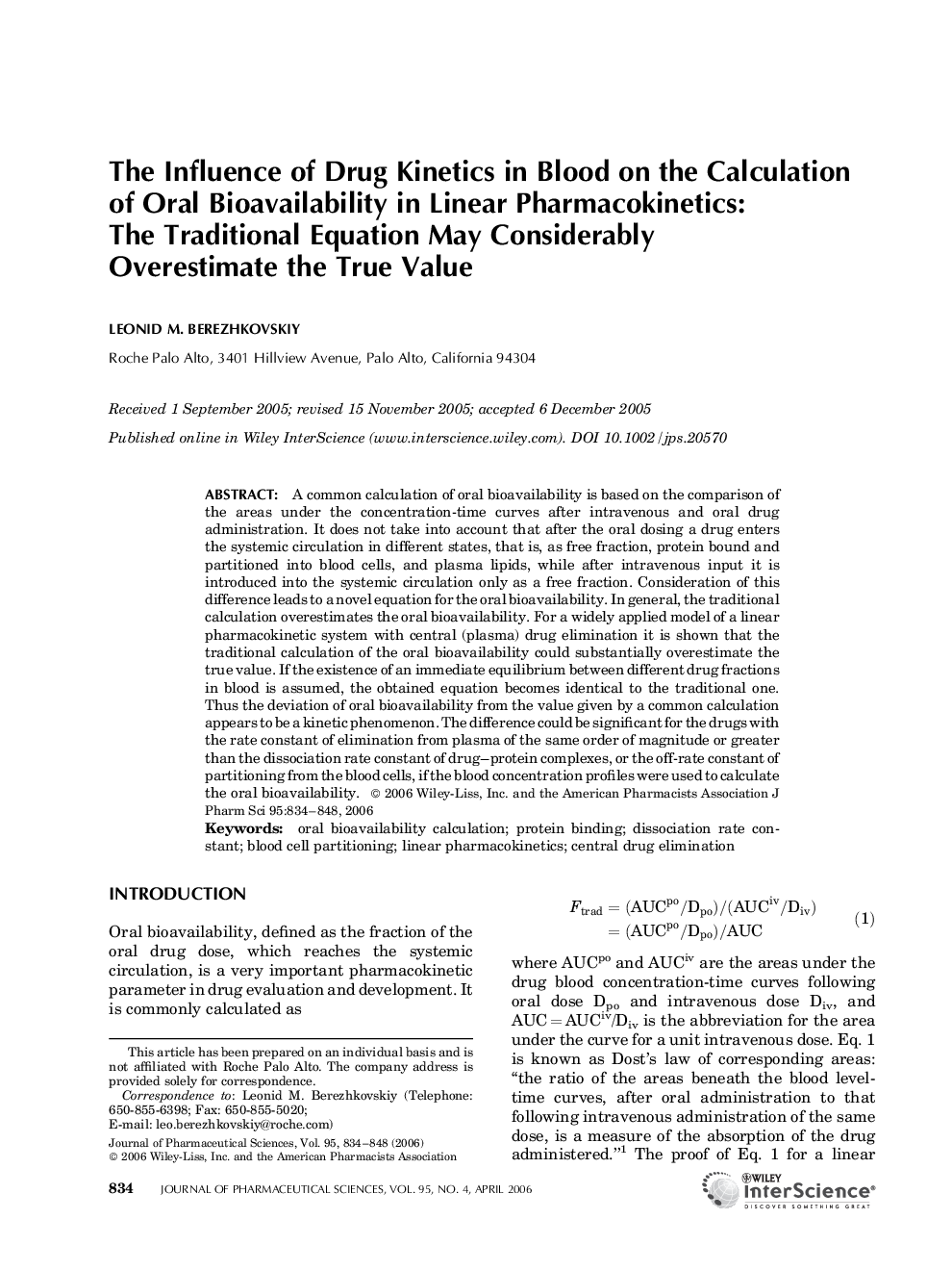| Article ID | Journal | Published Year | Pages | File Type |
|---|---|---|---|---|
| 2488033 | Journal of Pharmaceutical Sciences | 2006 | 15 Pages |
Abstract
A common calculation of oral bioavailability is based on the comparison of the areas under the concentration-time curves after intravenous and oral drug administration. It does not take into account that after the oral dosing a drug enters the systemic circulation in different states, that is, as free fraction, protein bound and partitioned into blood cells, and plasma lipids, while after intravenous input it is introduced into the systemic circulation only as a free fraction. Consideration of this difference leads to a novel equation for the oral bioavailability. In general, the traditional calculation overestimates the oral bioavailability. For a widely applied model of a linear pharmacokinetic system with central (plasma) drug elimination it is shown that the traditional calculation of the oral bioavailability could substantially overestimate the true value. If the existence of an immediate equilibrium between different drug fractions in blood is assumed, the obtained equation becomes identical to the traditional one. Thus the deviation of oral bioavailability from the value given by a common calculation appears to be a kinetic phenomenon. The difference could be significant for the drugs with the rate constant of elimination from plasma of the same order of magnitude or greater than the dissociation rate constant of drug-protein complexes, or the off-rate constant of partitioning from the blood cells, if the blood concentration profiles were used to calculate the oral bioavailability.
Related Topics
Health Sciences
Pharmacology, Toxicology and Pharmaceutical Science
Drug Discovery
Authors
Leonid M. Berezhkovskiy,
